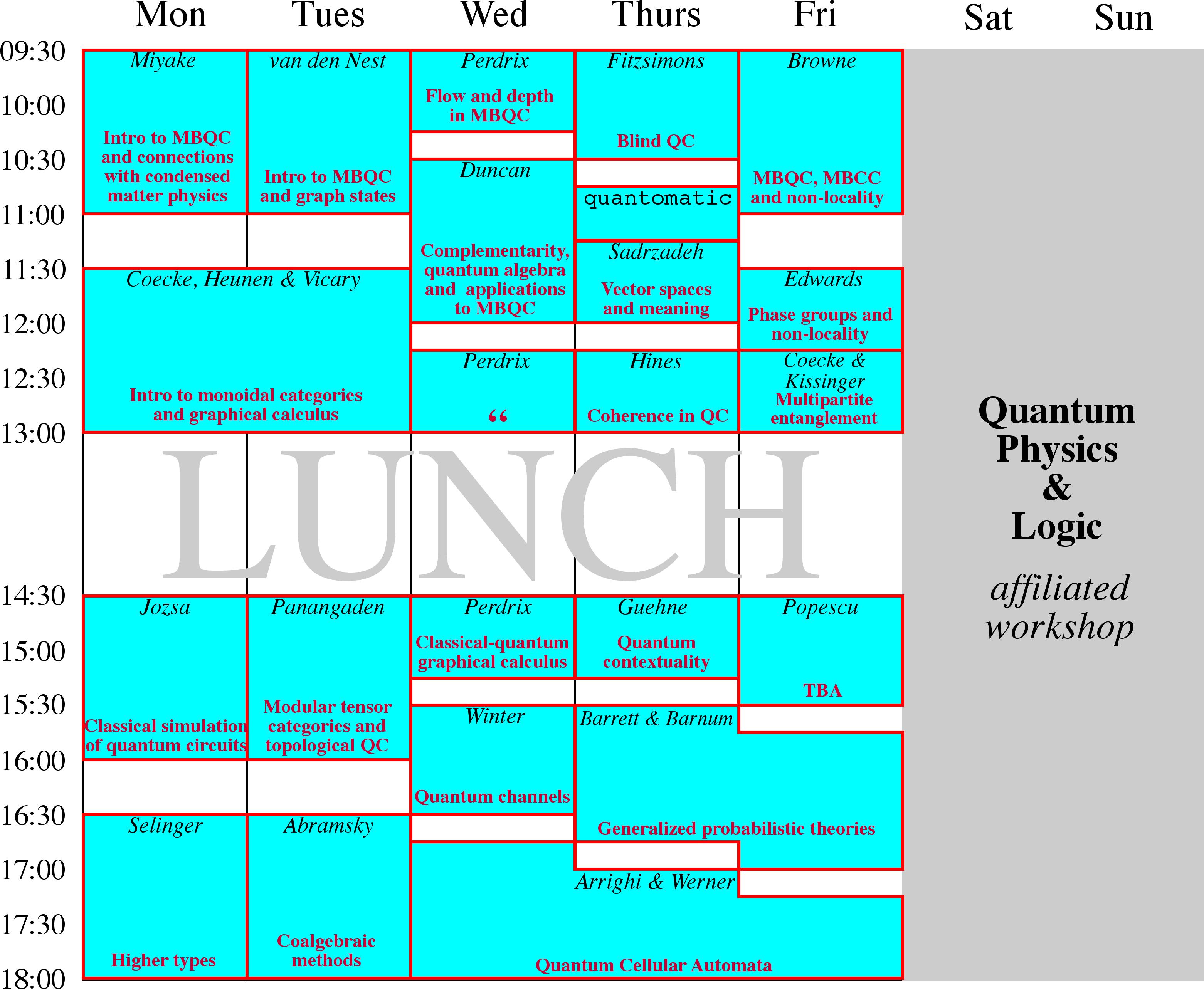Quantum Physics and Logic at Oxford
Posted by John Baez
I’m trying to cut back on jetting about, with some success — but I couldn’t resist going to this:
- Quantum Physics and Logic (QPL7), Saturday/Sunday May 29-30, 2010, Oxford. Organized by Bob Coecke, Prakash Panangaden, and Peter Selinger. Before the workshop itself there will be a school from May 24th to 28th.
It’s the seventh of the QPL series. But the meaning of the abbreviation “QPL” has changed. For the first four workshops of this name, it meant “Quantum Programming Languages”. Now it means “Quantum Physics and Logic”. That’s because the scope has broadened to cover everything about “the interaction between modern computer science logic, quantum computation and information, models of spatio-temporal causality, and quantum foundations.”
So far all I know about the speakers is that there will be 1-hour talks by Antonio Acin, Louis Crane and myself. Antonio Acin works at the Institute of Photonic Sciences in Barcelona. Louis Crane was working on 2-categories and extended topological quantum field theories long, long before they became fashionable. He was the one who got me interested in that stuff!
I plan to give a talk on “Duality in logic and physics”, which will go from categories where the morphisms are matrices taking values in a rig (as we’ve often discussed here, to categories of profunctors and spans, to the way star-autonomous categories act like commutative Frobenius algebras in the world of profunctors, to some -categorical and/or “derived” analogues of these ideas if the audience is still awake.














Re: Quantum Physics and Logic at Oxford
I take it then that your conviction in AGW is as strong as ever. You wrote back here:
I think it would be very helpful if scientists, especially those with no career-related stake in climate science such as yourself, could talk us through the case for AGW from their own perspective.
I must say my own confidence in it has reduced over the past few years. But I am no scientist. Perhaps the best things philosophers have achieved throughout the centuries is to point out how the passions interfere with our reasoning. Popper’s major point was to warn us to guard against a psychological tendency we all have to seek only confirmation of our beliefs. It is not hard to imagine passions interfering on both sides of a theory predicting a catastrophic future. The Cambridge philosopher Simon Blackburn makes a brief point about this in his lecture Does Relativism Matter?
A useful case study could be made of the Y2K problem. Perhaps one already has been made.